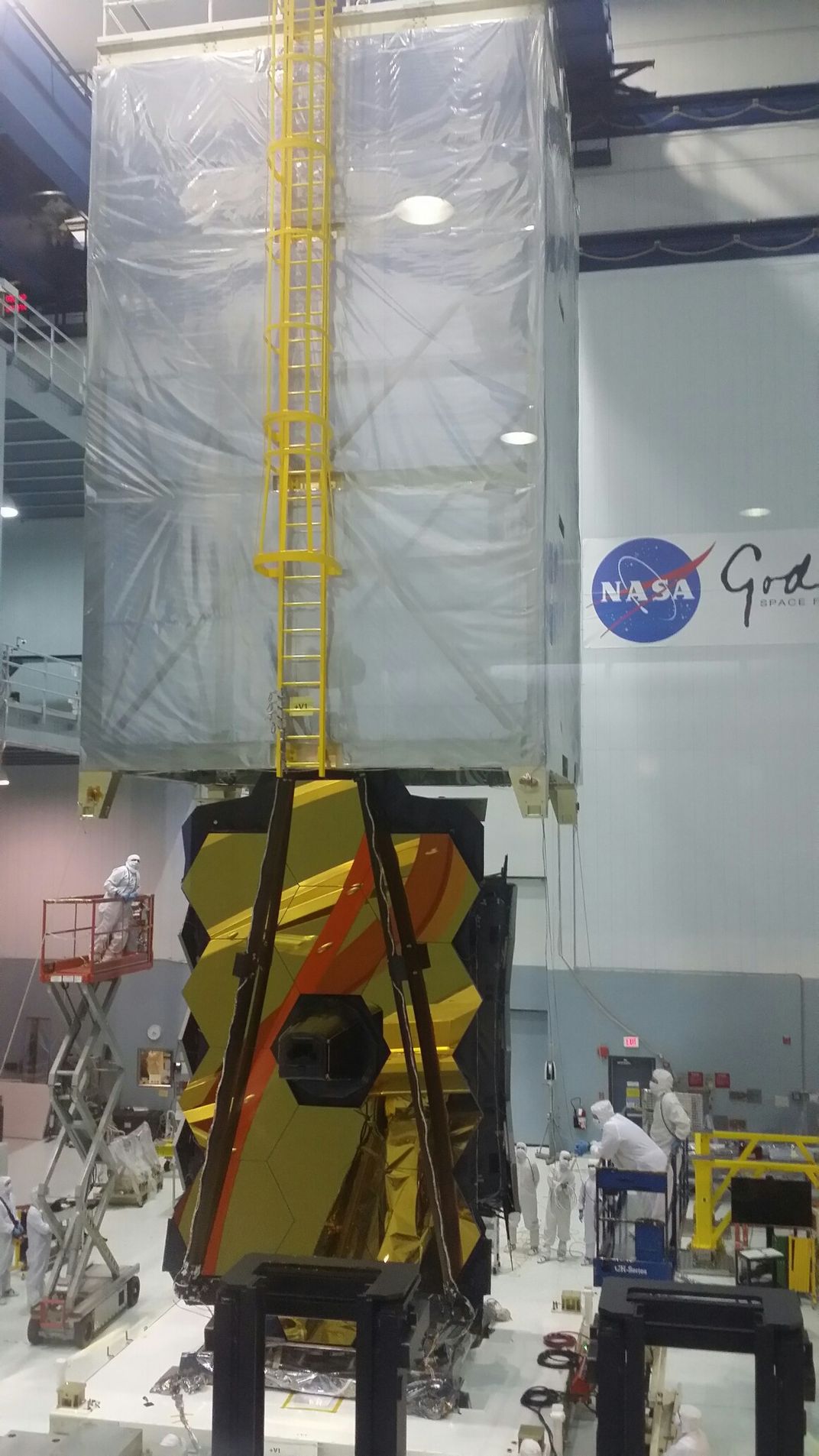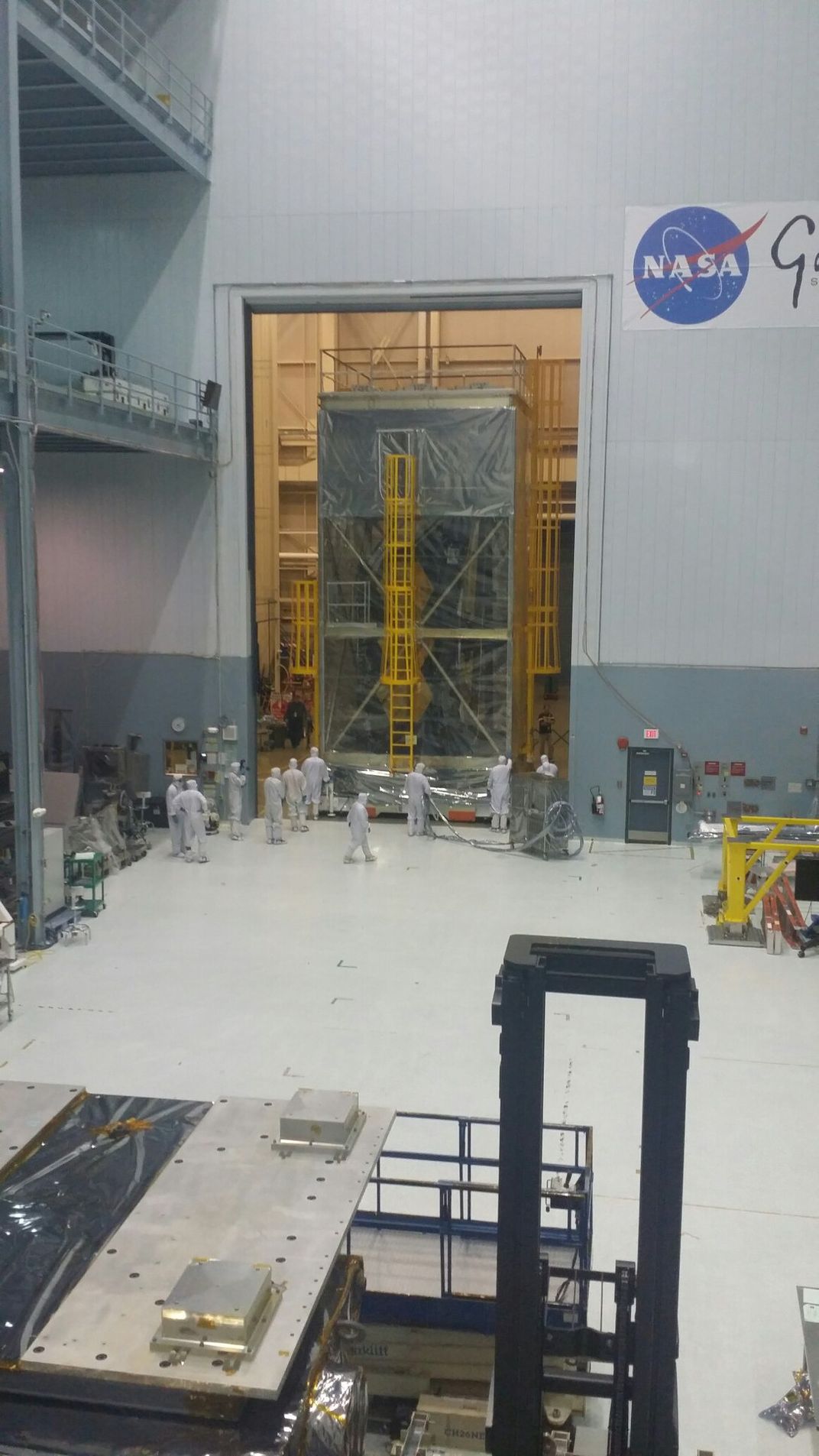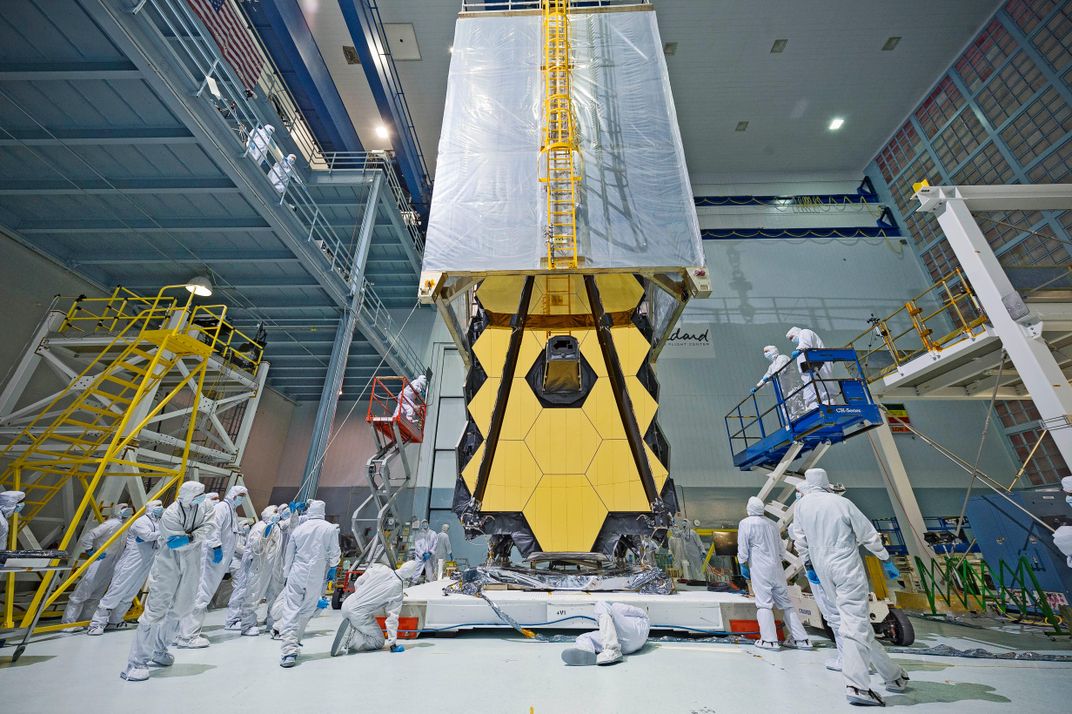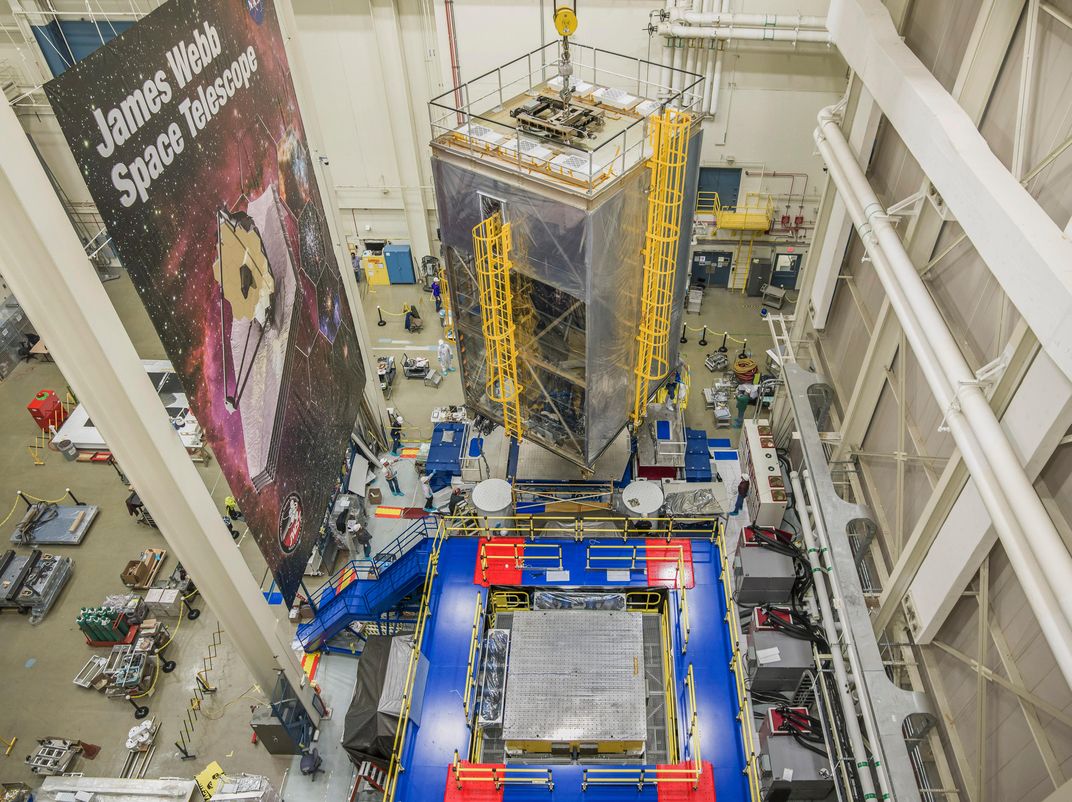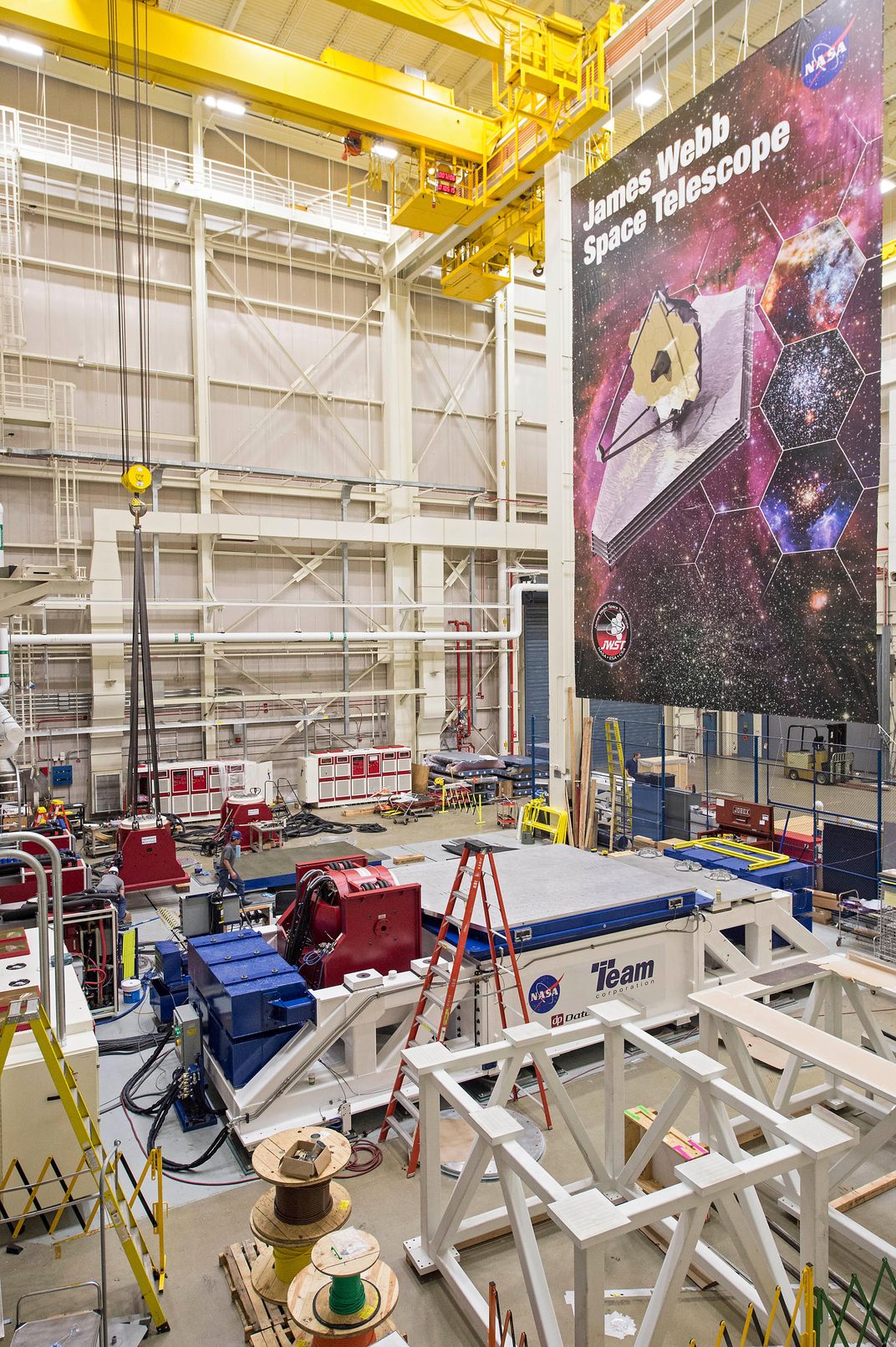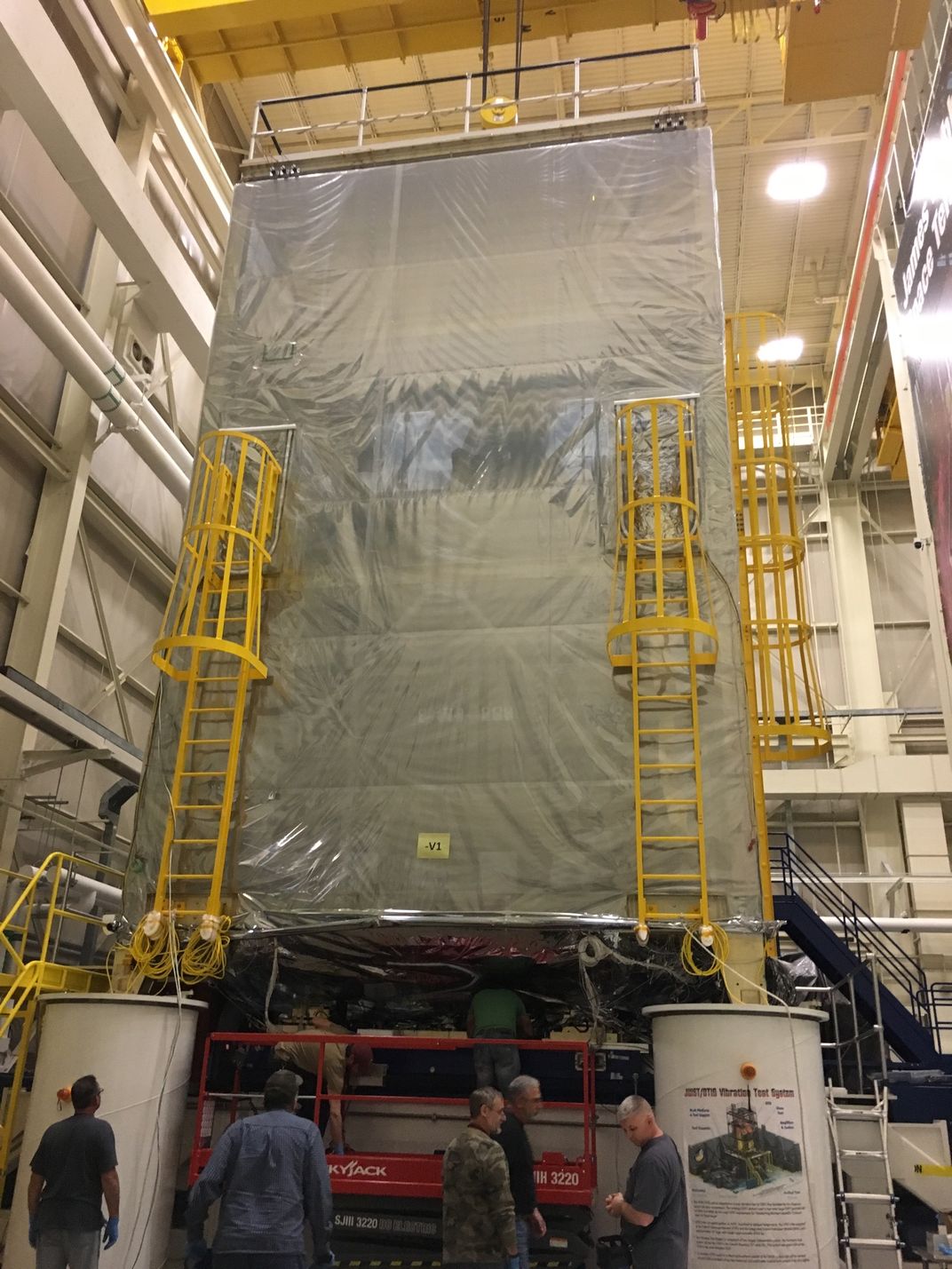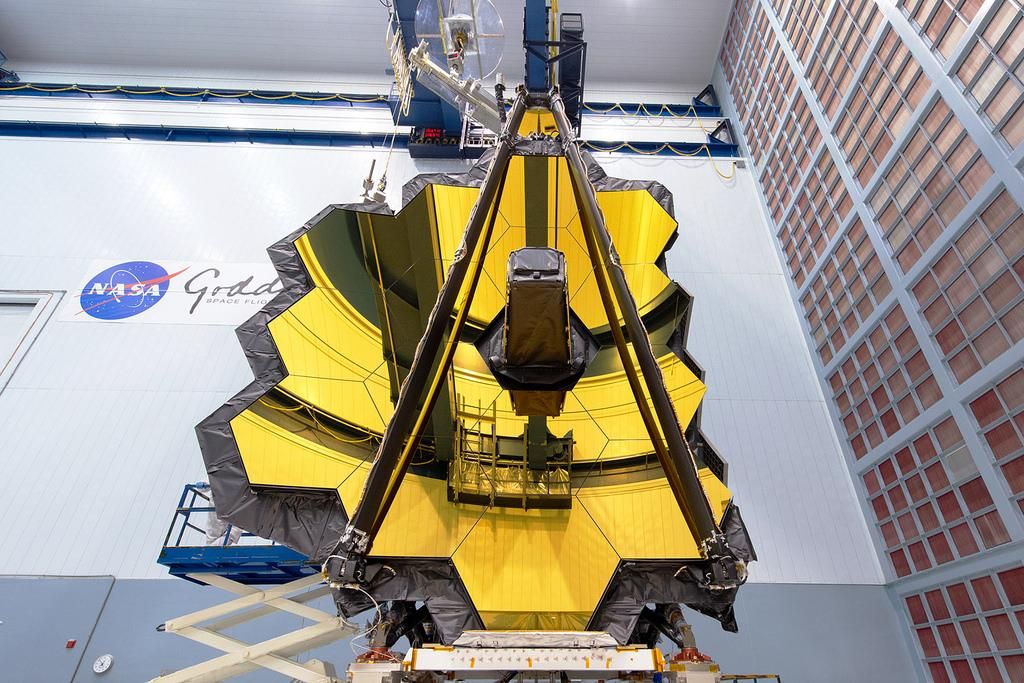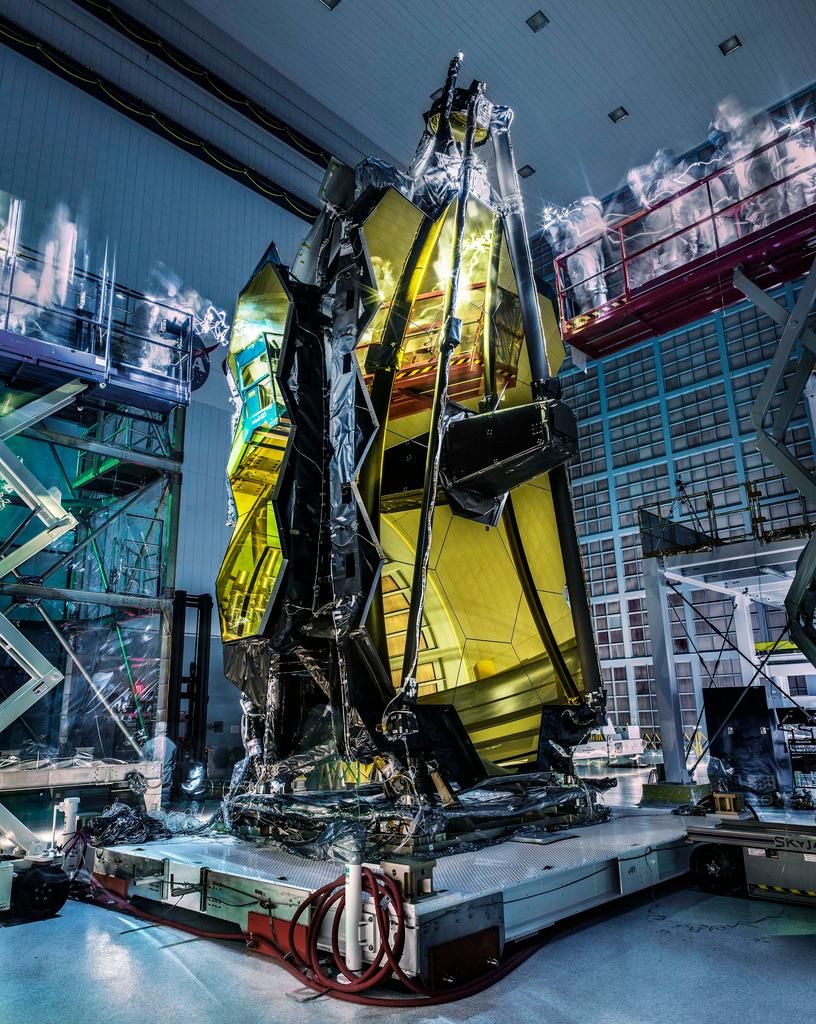Watch Scientists Freeze and Shake the James Webb Space Telescope
The largest space telescope ever built has a few last tests to pass
The 18 hexagonal mirror segments are polished sparkly clean. The date is set for October 2018. And the huge James Webb Space Telescope (JWST) is almost ready to launch. It will assume its place in orbit, unfurl like an exquisite origami sculpture and take a look at the farthest away, earliest reaches of the universe.
But first, the telescope needs to shake and freeze. NASA is in the midst of the final tests to make sure that the JWST will survive the noise and vibration of a rocket-powered takeoff and the frigid temperatures waiting for it beyond the Earth's atmosphere, a narrator explains in a video from NASA's ScienceCasts.
To test if the many components can withstand the stress of launch, NASA engineers and technicians wrapped the telescope in a protective tent and pushed it through massive steel doors into an acoustic testing chamber at NASA's Goddard Space Flight Center in Greenbelt, Maryland. The telescope, looking like a shiny, inelegantly-wrapped present, vibrated on special-designed shaker table up to 100 times per second, according to a press release.
Next, the JWST will travel to the Johnson Space Center in Houston, Tex. for cryogenic testing. The whole telescope and instrument package will be chilled together to approximately 388 degrees Fahrenheit, according to the NASA ScienceCasts article.
"Webb has many interconnected parts of different stiffnesses," says Eric Smith, the program director for JWST, in the video. "All those parts—including the folded, stowed instruments and mirrors—have to survive launch at room temperature. These elements must then all come together seamlessly in extreme cold to form perfect optical images."
Since materials can change shape and become more brittle as they cool, this testing is vital. Nothing can break when the telescope is unfolding some million miles away from Earth at the second Lagrange point, a special spot where the telescope will stay close to the Earth but orbit around the Sun. The morphing of chilled material must be accounted for with incredible precision.
"Think of being able to repeatedly parallel park your car and know the position of your back bumper to within a 10th of a diameter of a human hair," Smith says. "That's how accurate we must be in knowning the position of our mirror surfaces."
The telescope is the most powerful space telescope yet constructed. It is often called the successor to the Hubble Space Telescope, though the two telescopes' lifespans will overlap if all goes as planned, thanks to the success of repairs on the older Hubble. The JWST, however, is much larger and more complex. The telescope will see in infrared light, as opposed to the ultraviolet and visible wavelengths the Hubble uses, which will allow the Webb to glimpse light from the earliest stages of the universe and get a close look at exoplanets that might harbor life.
The new telescope will also keep a steady stream of stunning images flowing to an eager public. NASA invited artists to visit the telescope while it is still on Earth and learn about its mission. The resulting paintings, sculptures, drawings and other works were on exhibit at Goddard earlier this month and are still viewable online.
"The first time NASA Goddard got to see the "face" of Webb - those beautiful, giant, golden mirrors - was magical," says Maggie Masetti, the project's social media lead and website manager at Goddard, in a press release about the event. "Getting to see one's self reflected in something that will see the first stars and galaxies is a humbling experience, and one that makes you think about how humanity is tied in with the things we are exploring."
Imagine what the telescope may inspire once it starts working. Artists, scientists and space enthusiasts alike await the first images with excitement.
(h/t The Kid Should See This)
